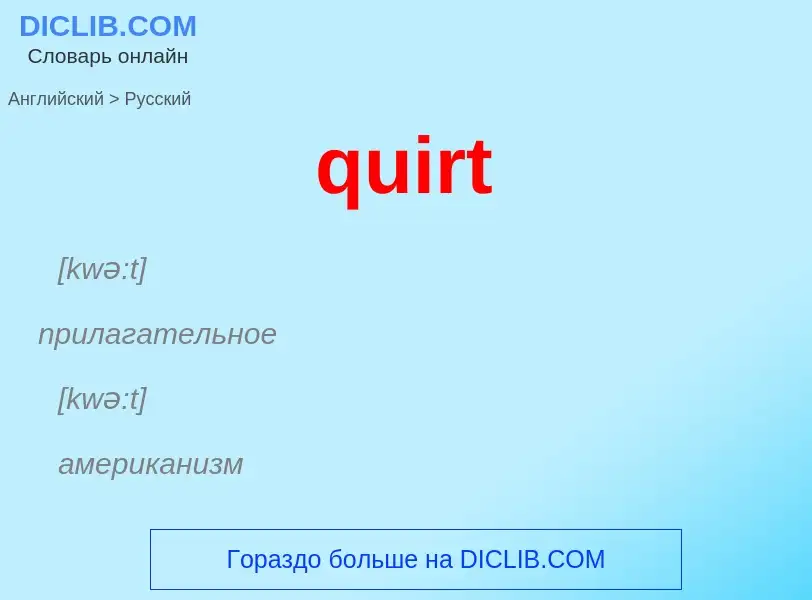Tradução e análise de palavras por inteligência artificial ChatGPT
Nesta página você pode obter uma análise detalhada de uma palavra ou frase, produzida usando a melhor tecnologia de inteligência artificial até o momento:
- como a palavra é usada
- frequência de uso
- é usado com mais frequência na fala oral ou escrita
- opções de tradução de palavras
- exemplos de uso (várias frases com tradução)
- etimologia
quirt - tradução para russo
[kwə:t]
прилагательное
[kwə:t]
американизм
ремённая плеть
арапник
существительное
общая лексика
арапник
глагол
общая лексика
хлестать, пороть арапником
американизм
хлестать
пороть ремённой плетью
арапником
Definição
Wikipédia

A quirt is a short whip associated with the Southwestern United States. It often has a braided leather lash.
The falls on a quirt is made of leather, usually cowhide. The core of the quirt can be a leather bag filled with lead shot; the main part including the handle is often made from braided rawhide, leather, or kangaroo hide and is usually somewhat stiff but flexible.
The old-style horse quirt is still carried by some Western horsemen, and this style of quirt is seen in the early Western cowboy films.
The quirt, due to its slow action, is not particularly effective as a riding aid for horses, though at times it has been used as a tool of punishment. Rather, it is an effective tool to slap or goad cattle from horseback.
In the vaquero tradition, a quirt with a long handle, known as a romal, was attached to the end of a closed set of reins. The romal was primarily used as a noisemaker to slap or goad cattle. (The handle made it too slow and of the wrong length for use on the horse.) This combination of romal and closed reins, today referred to as "romal reins" or "romal-style reins", is seen primarily in the horse show ring in certain types of Western pleasure classes.
A quirt is still commonly used by horse-riding herdsmen of Mongolia. They can be highly individualized. Most are braided rawhide attached to a carved wooden handle or to a handle made from a segment of a stout tree branch. Others are only braided rawhide, with a loop at one end that serves as the lanyard.
Quirts were also used by some staff at residential schools to punish students. The severity of such beatings included broken skin on the bodies of First Nations children.


